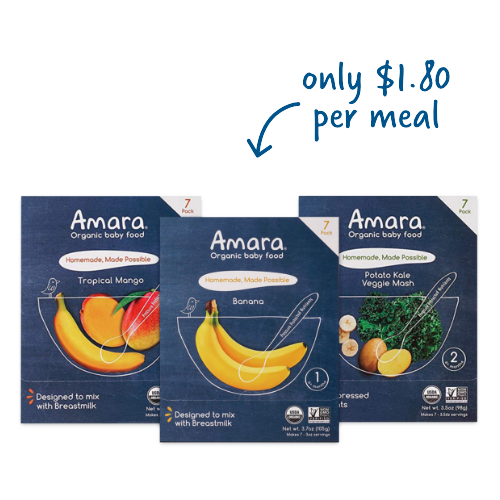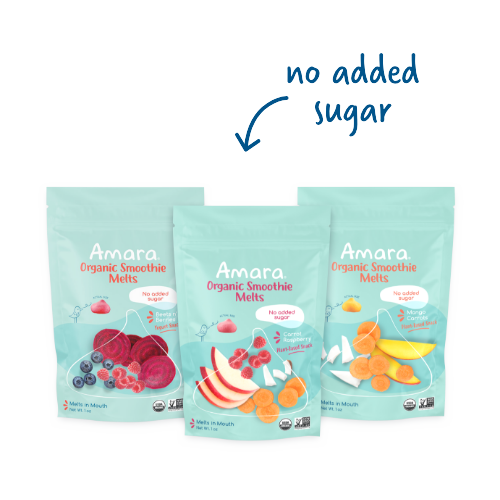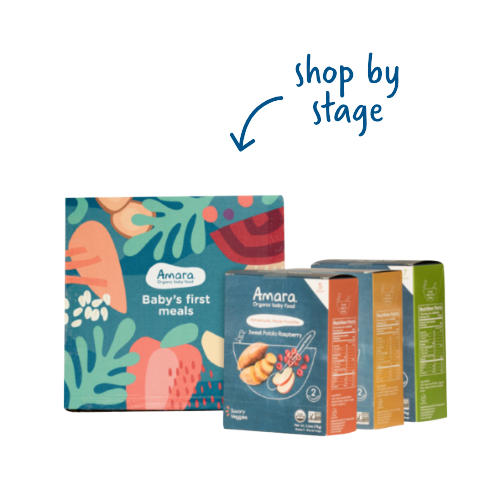
Welcome to summer! Here at Amara, where we’re all about real, fresh food, we get excited about summertime because it’s when the earth produces some of the best fresh produce!
Let us help you find it.
Today, we have six ways for you to shop locally and seasonally:

1. Go to your local farmers’ market
Shopping at your local farmers' market is one of the best—and most enjoyable—ways to help your family eat more locally and seasonally. You can use the National Farmers’ Market Directory to find one—or more!—close to you.
Tip: be sure to check the days and hours they’re open: often, they operate on weekends and only certain weekdays. Another tip: when picking a time to go, air on the earlier side. Not only will they be less crowded, but they usually open very early (farmers get up early!) and close earlier than you might expect.

2. Join a CSA
A CSA is short for “community supported agriculture.” As a member, you’re connected directly to a farm or group of farms, often small family-run ones. Depending on what you sign up for, you get fresh produce from the farm(s) once a week, biweekly, etc. Sometimes, you pick it up at the farm, and sometimes the CSA will have pick-up locations throughout the area. You usually can get “add-ons,” too—things like eggs, flowers, herbs, depending on what the farm grows.
Joining a CSA not only helps your family eat locally and seasonally—but you’re also directly supporting your local independent farming community! Check out Local Harvest CSA guides to find one near you.

3. Go to a local U-pick farm
Did you know that some farms will let you come and pick your own produce? How cool is that! Check out the U-Pick Farm Locator for the closest farms to your family. At the farm, you’ll have at your fingertips your area’s freshest, most seasonal produce. And on top of that, you and your family can see where the veggies and fruits you’re eating actually come from. (I know I’m not the only one that looks at a certain vegetable and is like, “does this grow on a bush … or underground…?”)
4. Get involved in a community/neighborhood garden
With community gardens, a group of people—often neighbors—jointly grow produce for their families within a public or private plot of land. While members usually have their own small plot within the garden that they’re responsible for, the collective benefits are huge: community gardens help the environment, beautify their surroundings, promote healthy lifestyles, build strong local bonds, and—of course—help people eat locally and seasonally. And sometimes, community gardens donate a portion of their produce to local food banks—another reason to join.
There are approximately 18,000 community gardens throughout the U.S. Use the American Community Garden Association’s website to find one near you.

5. When in doubt, garden yourself!
On top of ^^, why not start your own garden? If you have the space outside, start a small veggie or herb garden. Visit your local civic garden center for advice on what to plant, where to plant it, and when to plant it. They often have free or low-cost classes, online and in-person, that advise on what grows best in your area.
No space outside? No problem. Build a small veggie/herb box or buy one pre-made from your local hardware or gardening supply store. Simply secure it in a deep window sill or place it on your fire escape. (I’ve grown chives, radishes, and arugula from my fire escape planter!)
6. Choose Companies who Focus on Local, Sustainable, Organic, Non-GMO
For example, here at Amara we source all of our produce directly from the farmers. We make sure each fruit and vegetable is harvested at peak time for taste, nutrition and freshness, and is treated in a way that maximizes its nutritional value. For example, we use the whole apple, not puree, and even include the apple peels for extra vitamins and fiber. To learn more about what makes our baby food the best in quality and convenience, read on.

Check out our award-winning baby food blends and toddler snacks HERE.
***
What’s so cool about farmers’ markets, CSAs, U-pick farms, and community gardens is that they’re viable options for local produce year-round. So, while we might be excited that summer brings such delicious options (berries, tomatoes, melons …. mmm!), many places will be able to offer seasonal produce during the cold months, too (apples, pumpkins, squash, kale … and more!). Check out the U.S. Department of Agriculture’s seasonal produce guide for more info.
What does your family do to shop locally and seasonally?








Leave A Comment